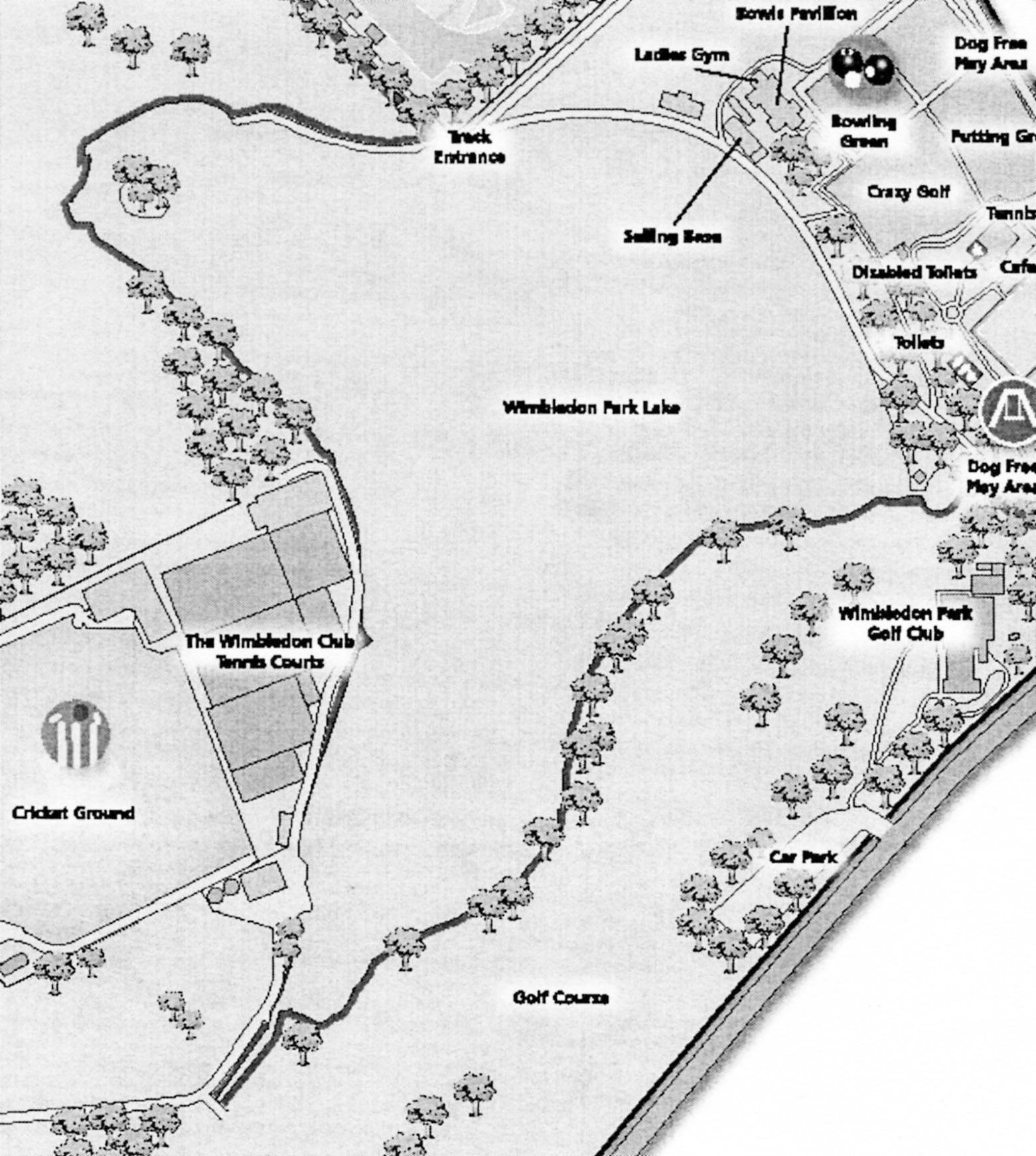The Lake and Water Quality
The Lake and Water Quality
Wimbledon Park Lake is really the jewel within the landscape created by Capability Brown. Although much of the surrounding area has changed since Brown's day, the lake and its configuration have remained essentially unchanged.
So, for over two hundred years now this body of water, which is officially designated a reservoir, has accumulated dirt and grim which when mixed with water has created a prodigious level of silt. In addition we have a considerable population of waterfowl who are well supported by the many park visitors who take such delight in feeding the ducks, geese and swans. However, this large waterfowl population has increased the PH levels found in the lake which effects water quality.
Because of the state of the water quality, the only fish that can survive in the lake are now large carp, which the Angling Club regularly fish.
The lake does benefit from underground aquifers and streams which gain fresh water from the gravel beds found on Wimbledon Common, but at times this isn't sufficient to maintain a standard of healthy water quality.
Further, during the summer the lake is subject to extensive blooms of green algae which can really be most difficult to control. Barley straw has been used in the past but more recently its application has actually made the situation worse due to the bales of straw breaking up and creating flotsam around the lake, which eventually sinks to the bottom and rots thus throwing off CO2 and generally not being helpful at all.
Recently a product has been found that may have a solution for the lake's water quality problems. The composition of silt is basically 80% water and 20% substrate. A product developed in France and called Aquaplancton separates the water from the substrate with the projected result of achieving a 70% to 80% reduction in the silt suspension found in a lake with the released water being clean and clear. The remaining substrate is mineralized and falls to the bottom of the lake. Unfortunately, this treatment has no effect on the silt base of the lake. As green algae and blanketweed feed on silt, the reduction of the suspended silt has an equal effect on both of these problem microbes.
The Max-Planck-Institute of Ornithology maintain a 19 acre lake called Goose Lake near Munich, Germany. Goose Lake's profile of problems were a very close fit to those found in Wimbledon Park Lake. Twenty years ago, Aquaplancton was used to reduce suspended silt, halt algae bloom and improve water quality. All of these goals appear to have been achieved, but that was twenty years ago and although the product is certainly of interest, it is expensive and does not tackle an established bed of silt in a lake.
For some years now, there has been a discussion regarding the reduction of silt in Wimbledon Park Lake by dredging. The main reason this approach hasn't gained support is the cost which is estimated to be several million pounds. Add to that the impact on the lake environment caused by traditional dredging methods its effect on the wildlife and the Watersports Centre and the Angling Club. Max-Planck solved the problem by contracting the German engineering company Wurzer of Munich to dredge their lake, but by modern technology which avoided any significant damage to the surrounding lakeside and disruption of the wildlife. Boats were used to position a large hose attached to a vacuum pump which sucked up the silt which was then transferred to a large holding tower. From the tower the silt passed to a large centrifugal force machine which spins the water from the silt and then returns the now clean water to the lake. From the centrifuge machine the clay is removed and piled to dry. In the end, Max-Plank used the clay to build a small hill as a landscape feature. The cost amounted to 1,200,000 Euros by the German company Wurzer of Munich.
For some years now, there has been a discussion regarding the reduction of silt in Wimbledon Park Lake by dredging. The main reason this approach hasn't gained support is the cost which is estimated to be several million pounds. Add to that the impact on the lake environment caused by traditional dredging methods its effect on the wildlife and the Watersports Centre and the Angling Club. Max-Planck solved the problem by contracting the German engineering company Wurzer of Munich to dredge their lake, but by modern technology which avoided any significant damage to the surrounding lakeside and disruption of the wildlife. Boats were used to position a large hose attached to a vacuum pump which sucked up the silt which was then transferred to a large holding tower. From the tower the silt passed to a large centrifugal force machine which spins the water from the silt and then returns the now clean water to the lake. From the centrifuge machine the clay is removed and piled to dry. In the end, Max-Plank used the clay to build a small hill as a landscape feature. The cost amounted to 1,200,000 Euros by the German company Wurzer of Munich.
Wimbledon Park Heritage Group


